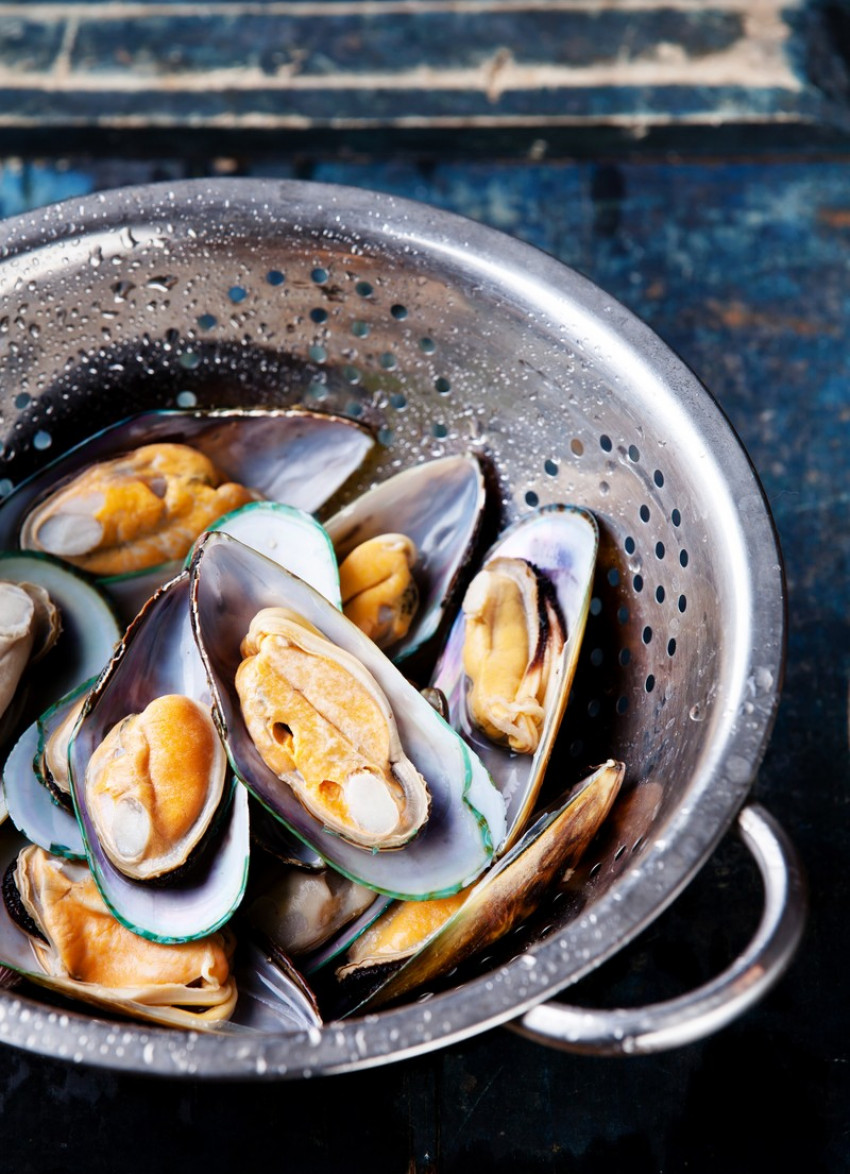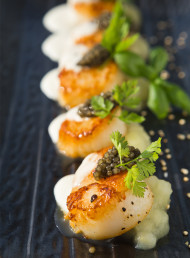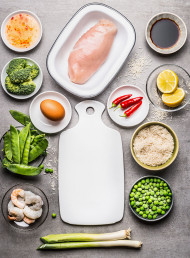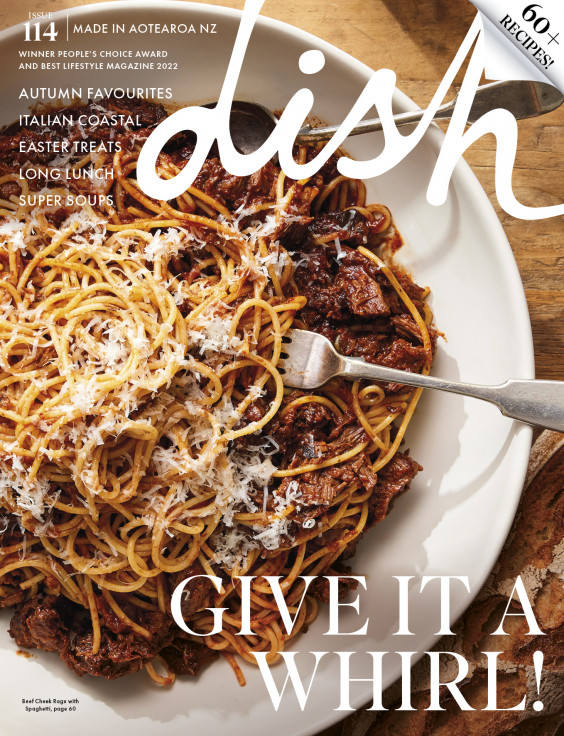Cooking with: shellfish

Summer and shellfish go hand in hand – in New Zealand we are blessed with an abundance that can be gathered at low tide, retrieved from beneath cool waters or simply bought from a friendly fishmonger.
Cockles (or little neck clams) pipi, tuatua (or surf clams): these are popular shellfish for gathering on summer holidays. If collecting your own, keep them in a bucket of seawater overnight so they can spit out any excess sand before you eat them. If buying cockles or pipi fresh, keep them in a well-drained bowl in the fridge, covered with a damp towel and use within 24 hours.
At their simplest, eat them raw with a squeeze of lemon juice, steam in a little seawater or cook them on a barbecue hotplate until they open. Always discard any shellfish that don’t open after cooking. Tuatua are best cooked as little as possible, they will toughen if overcooked.
Cockles, pipi and tuatua are delicious steamed with white wine, herbs and garlic, or try Asian-style flavours of ginger, lime juice and coriander. These small shellfish take only a couple of minutes to cook, so if using them in paella or with pasta add them in the last few minutes of cooking.
Mussels: When buying fresh, choose ones that are firmly closed and have a good weight to them. If storing, keep them wrapped in a damp tea towel in the vegetable bin of your fridge for up to 24 hours. To clean mussels before cooking, put them in a tub of cold water and discard any that float. Remove the fibrous beard with a sharp downwards tug and scrub the shell to remove any barnacles.
Steam mussels in white wine, butter and shallots or grill them on the half shell topped with a mixture of breadcrumbs, butter and herbs. Smoke them on the barbecue, chop finely and use in fritters, or make the classic French dish moules marinière by steaming the mussels with garlic, shallots, butter, herbs and white wine and then stirring in cream and chopped parsley.
Oysters: Fresh oysters, unopened, will survive for a week in the refrigerator wrapped in a damp sack or cloth. Store them cupped shell downwards. Look for oysters with a fresh, sea breeze aroma. If buying bottled oysters out of the shell ensure they look fresh and the water they’re in hasn’t clouded.
Oyster aficionados eat them raw on their own, or with a squeeze of lemon juice, white balsamic or other flavoured vinegar. Oysters can also be crumbed and deep-fried, cooked in a light tempura batter, poached delicately or grilled and served with a beurre blanc sauce.
Pāua: these are best cooked very lightly as the meat from the large foot muscle dislikes heat and will shrink and toughen quickly. Very fresh pāua are superb whole, lightly fried in butter with a little garlic for just a minute or two each side. Or serve them sautéed briefly and sliced or as part of a sashimi plate.
Scallops: straight from the sea, these are tastiest raw, sliced thinly and drizzled with a little lemon juice, olive oil and a sprinkle of good salt. They sauté beautifully, and in a searing hot pan they caramelize and sweeten. They are at their best undercooked, as over cooking will toughen them. Scallops can also be steamed, poached or roasted, added to pastas and warm salads. They pair well with bacon or pancetta, oranges or light creamy sauces, truffles and scented olive oils.
Crayfish: unless you dive for your own, crayfish are a bit of a luxury so ensure you treat them in the best possible way. It’s best to buy them live (but if you do buy a cooked crayfish check the tail is tucked firmly underneath and that it snaps back when you open it) and be sure to choose one that is lively and flaps its tail vigorously when picked up. It should feel heavy for its size. It’s not a good idea to buy a dead ‘green’ cray unless you know that it has only just been killed.
Keep the crayfish well chilled until you get it home. If you aren’t going to prepare it for cooking immediately then refrigerate it covered in a damp cloth, or keep it in a chilly bin on ice until you are ready. The recommended humane method of killing the crayfish is to wrap it in a damp tea towel and place it in the freezer for at least an hour to render it immobile. Then either:
Place the sleeping crayfish upside down on a chopping board and stab it at the point where the tail meets the head. Then split it through the centre. Killed this way it can then be grilled or barbecued.
OR
Bring a large pot of water (at least 4 litres) to the boil, salt it well and reduce the heat. Add the sleeping crayfish and simmer it – a good rule of thumb is 8 minutes per 500 grams. This is a good method if you need cooked meat for a salad. (If you wish you can first dispatch the crayfish by the method above.)
Key points:
If collecting shellfish ensure it is from an area where the seawater is clean. Notifications on any shellfish bans can be found online at fish.govt.nz
Don’t eat shellfish that have died during storage. Live shellfish will close their shells tightly when tapped. Live oysters will keep their shells tightly closed. Dead shellfish won’t respond and should be discarded.
Store shellfish in the lower part of your fridge, below cooked food.
Always discard shellfish that don’t open after cooking
latest issue:
Issue #114
Autumn has arrived, and with it, the latest issue of dish, jam-packed with recipes that will have you fizzing to get in the kitchen! With a long Easter lunch featuring perfectly pink, blushing roast leg of lamb and wildly decadent baked mashed potatoes with caramelised onions, to simply scrumptious chocolate treats and sensational seasonal baking this issue has you covered - we reckon the Hot Cross Buns are our best yet! Salads make way for soothing soups, pies, puddings and our cover star beef cheek ragù with spaghetti – a must-make dinner for family and friends. With over 60 recipes in our latest issue there’s plenty of inspiration to keep you busy – and well-fed! Don’t forget to share your dish dishes with our Facebook community.




